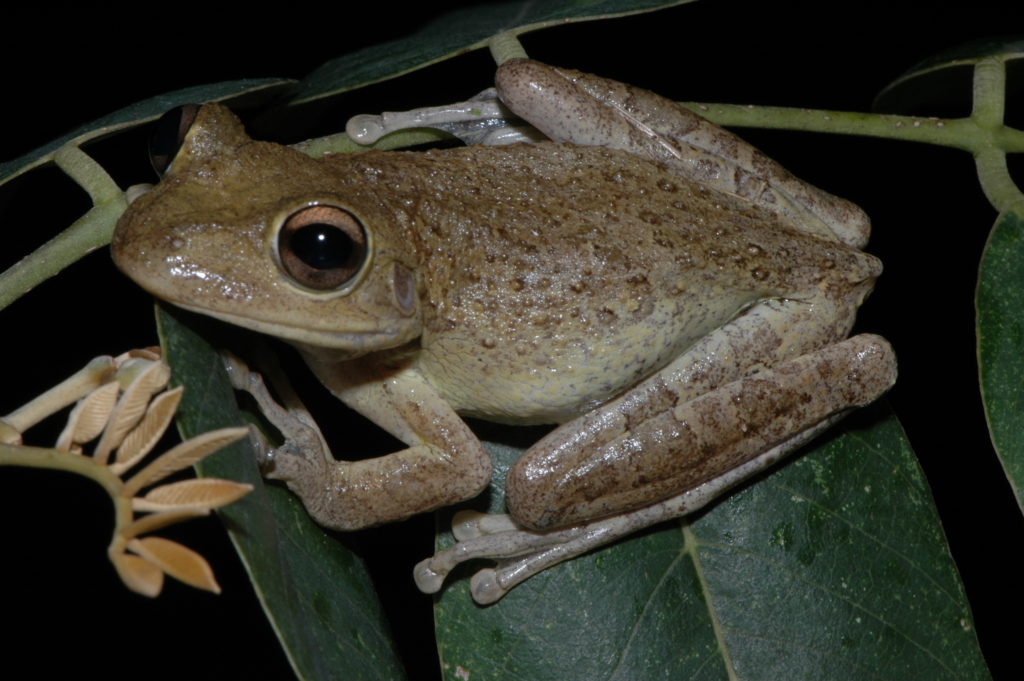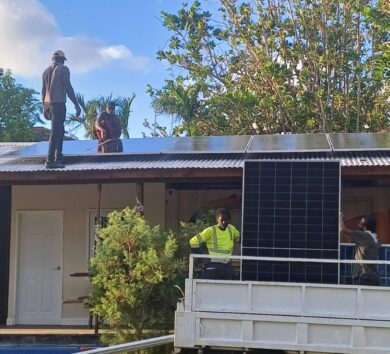

The National Environment and Planning Agency (NEPA) is today (January 26) clarifying recent advice to Jamaicans about the invasive Cuban tree frogs, amid a news report encouraging persons to catch the amphibians, bag and then freeze them.
The Tuesday report also made its way to Twitter, where Jamaicans were seemingly confused by the news alert for multiple reasons.
Among them, the Jamaican Twitterati questioned why the report seemed to promote persons coming into contact with the Cuban tree frog—a poisonous animal—and potentially causing cross-contamination on the suggestion that captured frogs should be frozen in domestic refrigerators to kill them humanely.
Others felt the recommendations were far too vague and offered little help in assisting Jamaicans from differentiating the Cuban tree frog from native species.
More still slammed the report as reckless and dangerous, urging citizens not to take the risk but to instead get wildlife specialists involved.
The remaining few questioned the authenticity of the advice, especially considering that the Government’s ban on single-use plastics remains in effect.
In a statement on Wednesday, Damany Calder, an environmental officer at NEPA, indicated that the news report was crafted from its ‘NEPA Connect’ series last hosted on January 21.
Calder, acknowledging the ban on plastic bags in Jamaica, offered the utilisation of paper bags or old newspapers in handling and snaring adult frogs. He stressed, however, that persons’ hands must be protected against possible exposure to the toxins, which coats the skin of the Cuban tree frogs.

“As you know, we have banned single-use plastic, so we do not recommend using single-use plastic bags, as they should not be in circulation,” he began.
“In terms of catching the adult frog, you can use things to protect your hands such as newspaper, brown paper bags, anything disposable, paper towels or even cloth,” Calder noted.
With respect to the freezing recommendation, Calder explained that subjecting frogs to a cold environment is an effective way to safely euthanise the animals. The combination of plastic and fridges to combat the population growth of the Cuban tree frog is a practice more established in Florida, where officials and residents are also grappling with the pesky amphibians.
“Now we know persons may be apprehensive to put the frog in the fridge but this suggestion is because we want to euthanise the [Cuban tree frogs] in a humane fashion,” the NEPA officer said.
“There are other methods that can be used such as blunt force trauma to the head; we do not recommend the use of harsh chemicals like bleach or even [boiling] water because this is a danger to yourself and your belongings. So the main thing is to put the animal out of its misery quickly,” Calder added.
As with many problems, Calder said the best eradication method at Jamaicans’ disposal is habitat control, adding that Cuban tree frogs thrive in almost identical conditions as mosquitoes.
“The best thing that you can do to prevent the spread and increase of the [frog] population is by controlling the breeding sites. These breeding sites are the same as mosquitoes, so any form of stagnant water [in] car tyres, blocked drains, blocked gutters, old [fridges]—even stored water—you need to make sure that it is covered,” he contended.
WATCH:
The environment officer encouraged Jamaicans to reach out to NEPA should they have more questions, particularly, on how to distinguish the Cuban tree frog from endemic species.
Partnering with the University of Florida, NEPA highlighted several local developments with the invasive Cuban tree frog, which was first detected in Jamaica in early 2021.
Dr Steve Johnson, a faculty member in the Department of Wildlife Ecology and Conservation, lamented the impact of Cuban frogs across Florida.
“[Cuban tree frogs] are not native to Florida [or] the United States. As far as we can tell, they arrived in Florida around the 1920s, so they’ve been here about 100 years. They showed up initially on the Florida Keys and over the next hundred years they’ve spread, advanced up the peninsula of Florida, breeding all over the place,” Johnson explained in the NEPA Zoom panel.
“We know that they’ve been negatively impacting our biodiversity, specifically, some of our native tree frogs…mainly by eating them; they’re predators on our native frogs and they’ve caused local declines in our tree frogs in Florida,” he added.
For his part, terrestrial ecologist Damion Whyte said that in Jamaica, Cuban tree frogs are mainly concentrated in the southern section of the island.
Whyte, who forms part of the national Invasive Alien Species Working Group (IASWG), argued that the work in Jamaica is preliminary at this time and largely relies on citizen submissions on social media as well as a handful of complaints from local bee and fish farmers.
“The parishes we have heard so far [are in] Clarendon, Westmoreland, St Elizabeth, Manchester [and] St Catherine…we mostly find it in urban areas, around people’s houses,” Whyte disclosed.
Click here to watch the NEPA Connect session in full.







Comments